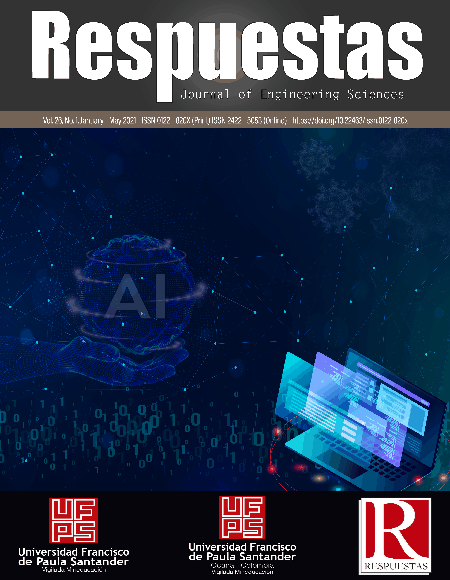Estudio de la maquinabilidad del acero AISI P20 y AISI H13 por ensayo de taladrado con fuerza axial constante en el punta de la broca
Study of the Machinability of AISI P20 and AISI H13 1010 by Drilling Test with Constant Axial Force at the Drill Tip
Contenido principal del artículo
La maquinabilidad en términos generales, es la facilidad con la que un material puede ser mecanizado por arranque de viruta, según un conjunto de condiciones de corte. Es necesario disponer de una metodología rápida para la comparación de la maquinabilidad entre materiales con el fin de elegir, cuál de ellos es el óptimo según las condiciones de trabajo dadas por el diseñador. Realizar un estudio comparativo de la maquinabilidad de los aceros moldeados AISI P20 y AISI H13 mediante el ensayo de taladrado con fuerza axial constante en la punta de la broca. Para realizar los ensayos de maquinabilidad, se adaptó una máquina de taladrar para realizar los ensayos de maquinabilidad entre dos aceros muy utilizados en la construcción de piezas y componentes de maquinaria, el AISI P20 y el AISI H13. En este tipo de pruebas se invierte poco tiempo en el mecanizado y se utiliza poco material, obteniendo las condiciones óptimas de corte y los valores de maquinabilidad.
Descargas
Detalles del artículo
B. Mills and A.H. Redford. “Machinability of Engineering Materials”. England. Springer Science & Business Media. 2012.
M.P. Groover. “Fundamentals of Modern Manufacturing: Materials, Processes, and Systems”. USA. John Wiley & Sons. 2020.
A. Armillotta. “On the role of complexity in machining time estimation”. Journal of Intelligent Manufacturing, pp. 1-19. 2021. DOIhttps://doi.org/10.1007/s10845-021-01741-y. DOI: https://doi.org/10.1007/s10845-021-01741-y
E.M. Trent & P.K. Wright, P. K. (2000). “Metal Cutting”. Butterworth-Heinemann.
H. Chandrasekaran and R. M’Saoubi. “Improved machinability in hard milling and strategies for steel development”, CIRP Annals. Vol. 55(1): pp. 93-96. 2006. DOI: https://doi.org/10.1016/S0007-8506(07)60374-6
N. Evangelista Luiz. “Comparação entre o ensaio de usinabilidade de curta duração eoensaio de longa duração (Comparison between short and long term machinability tests, in Portuguese)”. M.S. Thesis, Universidade Federal do Rio Grande do Sul, Escola de Engenharia, Programa de Pós-Graduação em Engenharia de Minas, Metalúrgica e de Materiais. Brazil. 2001.
P.S. Gowthaman, S. Jeyakumar, & B.A. Saravanan. “Machinability and tool wear mechanism of Duplex stainless steel–A review”. Materials Today: Proceedings, Vol. 26, pp. 1423-1429. 2020. DOI: https://doi.org/10.1016/j.matpr.2020.02.295
C. Zimmerman, S.P. Boppana, K. Katbi, & G.T.E. Valenite, G. T. E. “Machinability Test Methods”. ASM Handbook, Vol. 16, pp. 639-647. 1989. DOI: https://doi.org/10.31399/asm.hb.v16.a0002177
J.P. Davim. “Machinability of Advanced Materials”. John Wiley & Sons. 2014. DOI: https://doi.org/10.1002/9781118576854
M. Alvarado, H. Siller, P. Zambrano, C. Rodríguez, M.A. Rodríguez, A. Juárez, & A. Mascareñas. “Short-time Test for Evaluating the Machinability of Alloys”. WIT Transactions on Engineering Sciences, Vol. 64, pp. 155-166. 2009. DOI: https://doi.org/10.2495/MC090151
U. ERIKSSON. “The Quantitative Assessment of Machinability”. International Conference on Processing, Microstructure and Properties of Microalloyed and Other Modern High Strength Low Alloy Steels, Pittsburgh, Pennsylvania; USA, pp. 9-12. 1992.
V. Songmene, I. Zaghbani, & G. Kientzy. “Machining and Machinability of Tool Steels: Effects of Lubrication and Machining Conditions On Tool Wear and Tool Life Data”. Procedia CIRP, Vol. 77, pp. 505-508. 2018. DOI: https://doi.org/10.1016/j.procir.2018.08.252
L. Costa Herrero, C. Sierra Alcolea & J. Vivancos Calvet. “Comparative Study of the Machinability of a Sintered Steel and a Nodular Graphite Iron Using a Constant Axial Force Drilling Test”. In Materials Science Forum. Vol. 526, pp. 49-54. 2006. DOI: https://doi.org/10.4028/www.scientific.net/MSF.526.49
K. Navarro, E. Maza, “Adaptación y puesta en marcha de un taladro para pruebas de maquinabilidad en materiales”, B.S. Thesis, Universidad del Atlántico, 2017.
J. Rech, C. Le Calvez, & M. Dessoly. “A New Approach for the Characterization of Machinability Application to Steels for Plastic Injection Molds”. Journal of Materials Processing Technology, Vol. 152(1), pp. 66-70. 2004. DOI: https://doi.org/10.1016/j.jmatprotec.2004.03.010
Y. Kayır, M. Süzgünol. “Optimization of Cutting Parameters for Drilling AISI P20 Die Mold Alloy Steel with Taguchi and GRA Methods”. Gazi University Journal of Science, Vol. 31 (3), pp. 898-910. 2018.
P. Kumar & S.R. Chauhan. “Machinability Study On Finish Turning of AISI H13 Hot Working Die Tool Steel with Cubic Boron Nitride (CBN) Cutting Tool Inserts Using Response Surface Methodology (RSM)”. Arabian Journal for Science and Engineering, Vol. 40(5), pp. 1471-1485. 2015. DOI: https://doi.org/10.1007/s13369-015-1606-0
H.K. Tönshoff, W. Spintig, W. König, A. Neises, “Machining of Holes”. Developments in drilling technology CIRP Annals. Vol. 43 (2). pp. 551– 561. 1994. DOI: https://doi.org/10.1016/S0007-8506(07)60501-0
ASM Metals handbook. Volume 16 “Machining”. 1989.
ISO 3685: tool-life testing with single-point turning tools. International Organization for Standardization (ISO): Geneva, Switzerland, 1993.







